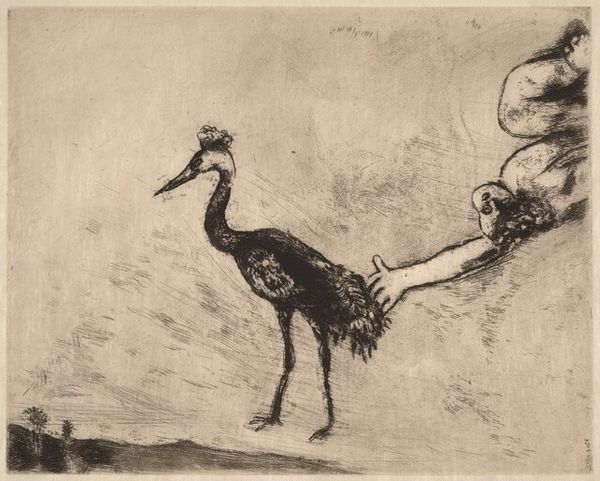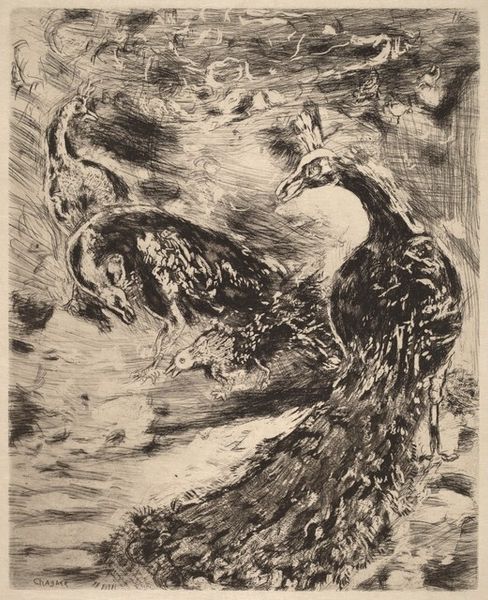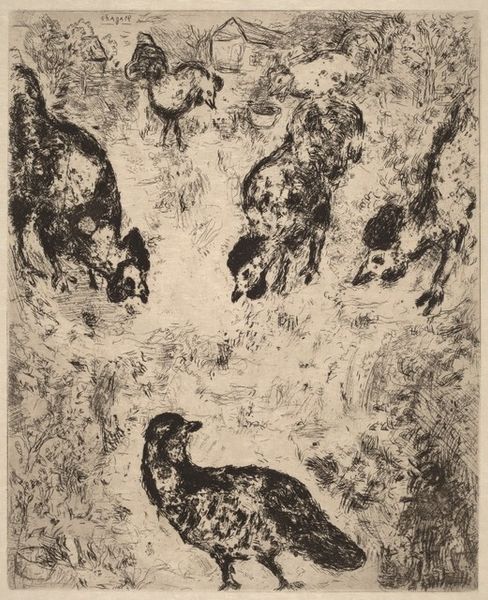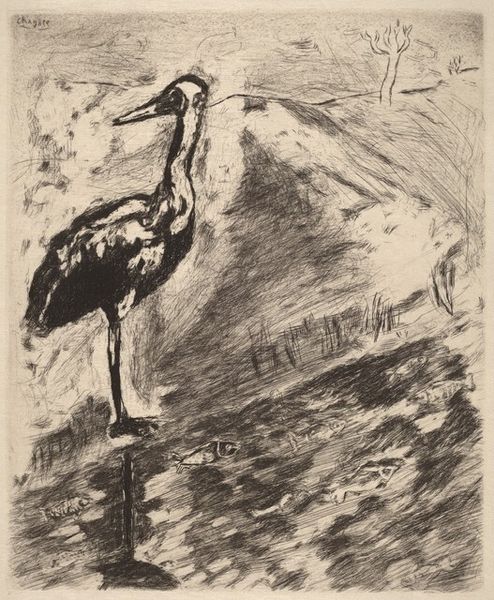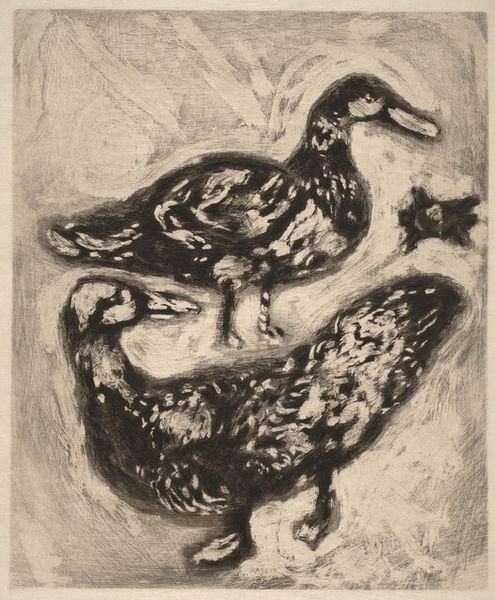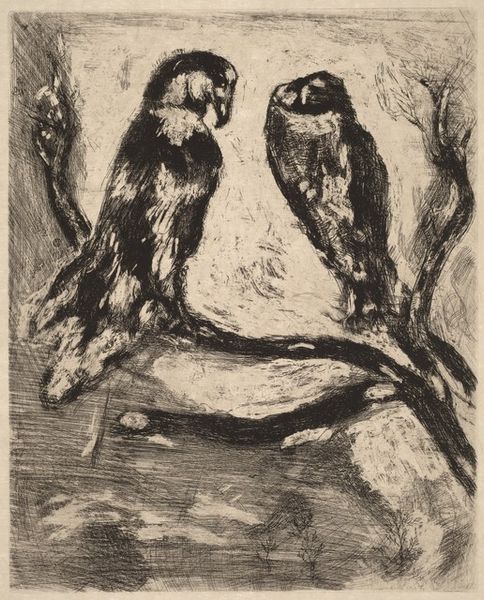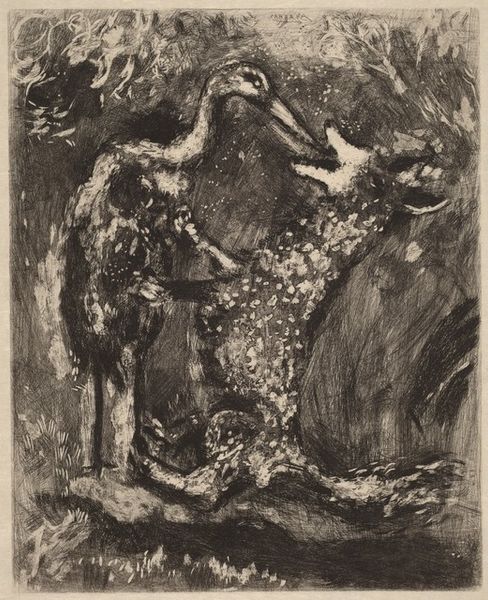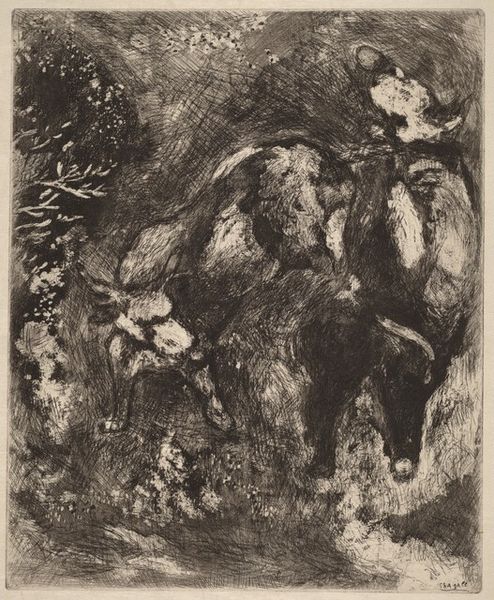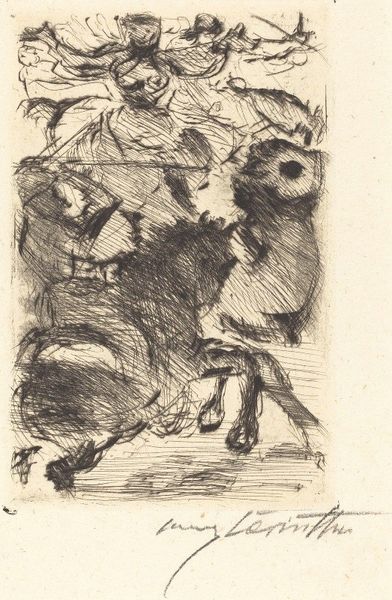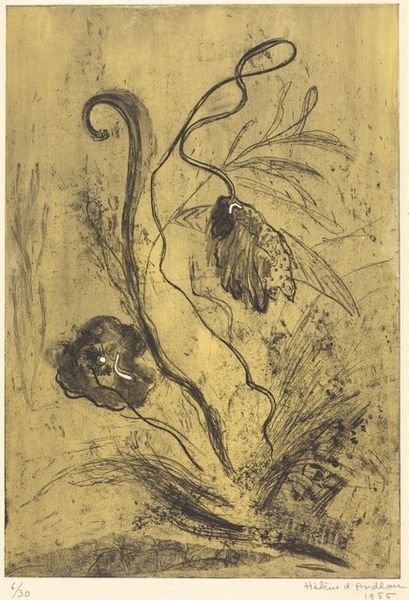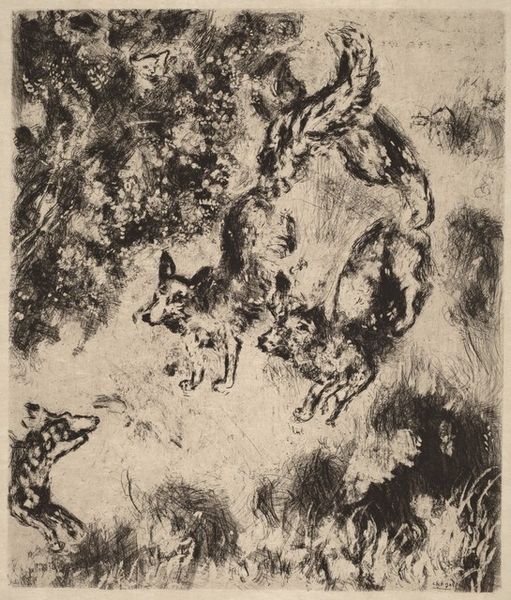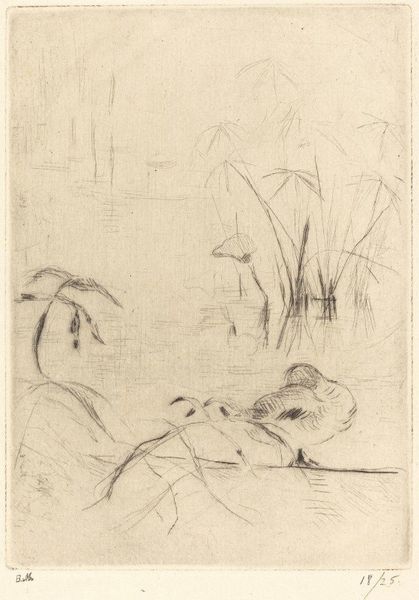
drawing, print, etching
#
drawing
#
ink drawing
#
narrative-art
# print
#
etching
#
figuration
#
folk-art
Copyright: National Gallery of Art: CC0 1.0
Curator: Here we have Marc Chagall's etching, "The Fox and the Stork," made between 1927 and 1930. Editor: It feels…sparse. Stark even. The raw lines of the etching lend a vulnerability to the scene. Is this intended to evoke feelings of sympathy toward the animals? Curator: Well, let’s consider Chagall's process here. As an etching, this piece required careful acid work on a metal plate, building up the image line by line. That labor intensive technique is key to its overall impact, it becomes part of the story. Editor: Absolutely. Looking at this now through the lens of power dynamics, it echoes deeply unequal social structures. The fox seems almost manic with greed, while the stork appears more somber and knowing. I’m wondering if Chagall might be speaking about larger cultural narratives here. Curator: It's part of a series illustrating La Fontaine's Fables. Chagall reinterpreted the stories through his distinctive folk-art lens. And to create these lines, we must understand the labor, the materials—the metal plates, the etching tools. Editor: Yes, but within that fable is this concept of exploitation inherent in our interactions – a critique of capitalism itself. And given Chagall’s background, his work often incorporates subtle acts of resistance or social critique. Curator: You’re right to emphasize the cyclical nature implied in folk tales, how themes of labor and fairness remain so evergreen, regardless of materials used in production. Editor: Thinking about identity, doesn't the fact that Chagall was a Russian Jewish émigré to France also influence how we should view his choice of fable? The idea of 'outsider' status. Curator: These printmaking processes can enable greater access, creating possibilities of distribution and engaging audiences far removed from the mainstream art world of painting and sculpture. Editor: This piece, on its own, becomes part of an on-going global dialogue reflecting the inequities in society, a space for reflection. Curator: It definitely reveals so much about the relationship between narrative and production. Editor: Leaving us to confront these cycles, encouraging empathy while dissecting historical structures of injustice.
Comments
No comments
Be the first to comment and join the conversation on the ultimate creative platform.
